Media | Articles
1977 Cadillac Seville: GM knocks it out of the park

Today we will be discussing one of my favorite Cadillacs, the svelte, elegant 1976–79 Seville. The right car at the right time—for GM and the Cadillac Motor Division—and a success by any standard. As the advertisements once said, “Best of all, it’s a Cadillac.” And while there’s a lot of disinformation and conjecture about these cars, they truly were Cadillacs.
The first Seville was the Eldorado Seville, sibling to the topless Eldorado Biarritz. The Eldorado Seville was available from 1956–60 and was one of the first American postwar cars with a vinyl roof. Starting in 1961, the Eldorado returned to the convertible-only model it had been from 1953–55 and remained so through the 1966 model year. But I digress.

One of the most widely circulated “facts” in certain circles regarding the 1976–79 Seville is that it was just a tarted up Nova. Um … no. Not at all. Or those folks know darn well that it’s bull, or exaggerated by perhaps 90 percent, but persist in saying it because they hate the car, or the idea of the car, or maybe just General Motors in general (no pun intended) Why? Who knows.

Yes, the Seville’s basic hard points did originate vis-a-vis that middle-America favorite, the Chevrolet Nova. But that was just what they started with. Once Cadillac had gotten the Seville to the point it wanted, it was so heavily revised and stretched that it was basically a new car. Its own entity, answerable to no other General Motors rolling stock.

It was, indeed, so substantially changed that GM designated the 1976 Seville as the K-body, not the X-body that the Nova, Ventura, Omega and Apollo were using. It didn’t hurt that it was a beautiful car, either. Honestly, I’ve always thought of them as an American Rolls-Royce Silver Shadow. Not ostentatious, not overdone. Just simply elegant. And timeless, even today.
Marketplace
Buy and sell classics with confidence

Cadillac certainly changed a lot between, let’s say, 1960 and ’70. Heck, times were changing! Another trick certain types of bloggers and online folk like to pull is the “darned old, stupid, cheap GM” schtick. Not just the Seville, but Cadillac in general. Decontenting, less chrome, more plastic, etc. Now, it is true that trim and upholstery started seeing some cost cutting in the late ’60s and ’70s. It began around 1969–70.

Interiors lost the aluminum and real wood trim, instrument panels became less ornate and had more plastic and/or padded foam. But most of this was safety regulations. As you would expect, it is far preferable to bounce one’s head off of a foam-rubber-padded instrument panel or door panel than bonking said head off a leather covered metal trim piece. And with some of the vitriol online folks sometimes show, you’d think Federal regulations and safety implementations were optional for the automakers. They were not.

The 1971 Cadillacs were all-new, from the least expensive Calais coupe to the top-trim “owner-driven” Fleetwood Sixty Special Brougham. But Broughamage was creeping in at the same time on the less-prestigious GM lines. Caprice, Grand Ville, Delta 88 Royale and Centurion all added more and more Broughamy touches to the middle-priced full-sizers. And this made the Cadillac seem somewhat less prestigious, less fancy. At least to a certain extent.

The 1971–76s were also gigantic, keeping with Cadillac tradition. In fact, they were the biggest Cadillacs ever produced, with the Series Seventy-Five limousines the absolute biggest. Not too long after the ’71 B- and C-bodies debuted, General Motors realized this and made plans to shrink its biggest offerings, starting with the next generation.
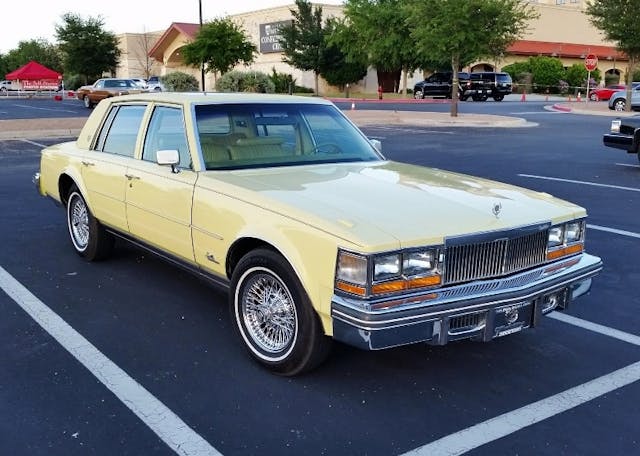
But what to do prior to the downsized ’77 Fleetwood/de Ville’s debut date? I can imagine the brain trust in Detroit, hashing things out over martinis. Or perhaps gimlets. “Well, people are paying more money than a Cadillac for those little Mercedes-Benzes! How about that? They’re smaller too. The seats aren’t cushy; they’re firm. They still have wind-up windows, the air conditioning hangs down below the dash like a secondhand 1963 Chevy II, and people are paying through the nose for them!”

“Well, Bob, we could do something like that. We have the money. We have the technology, and we have some of the best people in the business working for us. So why not give it a shot?”
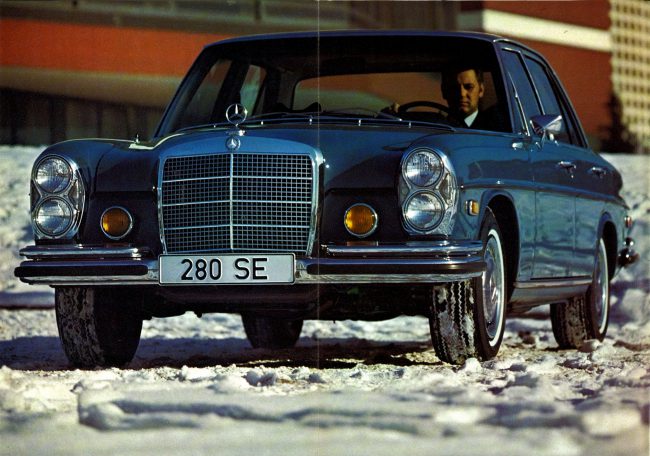
Yes, starting in the early ’70s, well-to-do folks nationwide were starting to see the merits of a certain European manufacturer with a three-pointed-star. And Cadillacs were getting relatively cheaper than their 1960s forebears (in order to chase more sales volume; Cadillac set a production record in 1973). The wreath and crest was perhaps not quite as special as it once had been to certain sects of the upper-crust automotive clientele. And folks who still loyally bought Cadillacs were harping about how big some of their models had been getting. What to do?
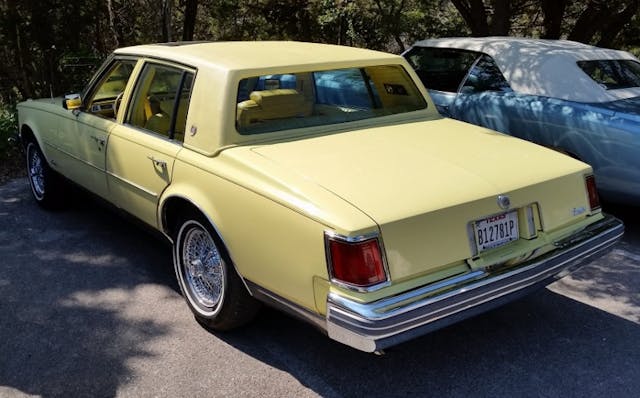
Solution: offer a smaller Cadillac. Customers had been asking for a smaller, more manageable Cadillac for a while, well before certain German luxocruisers became the latest must-have. So remember this, ladies and gentlemen. The Seville was a response to queries for a smaller Cadillac. It was a bonus that the smaller Cadillac was more in line with contemporary Mercedes-Benzes.
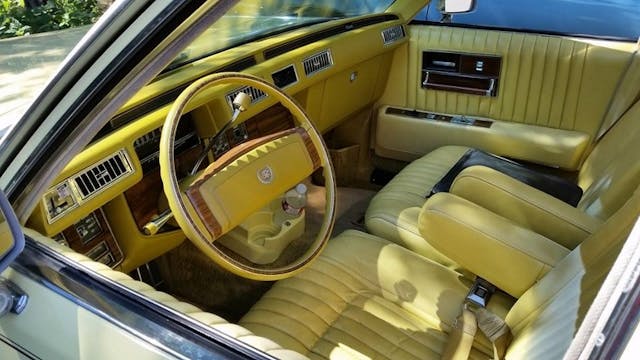
There had been a short-deck Cadillac in 1961, partly in response to wealthy Cadillac owners whose mansions had somewhat short 1920s-era garages. It lasted through the 1963 model year, but never sold in significant numbers.
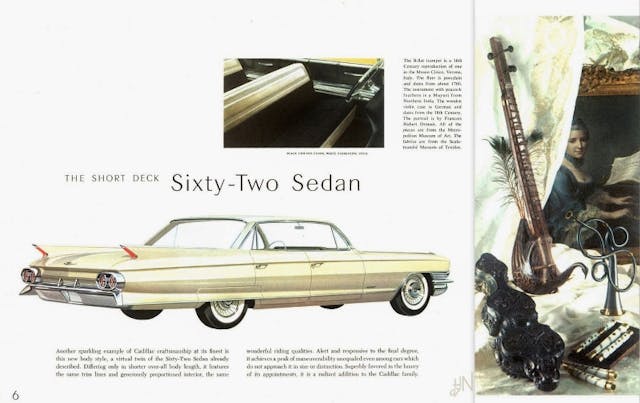
The customers asked, Cadillac answered, and no one picked up on it for some reason. But by the mid-’70s, the time was right to give it another try. And this wouldn’t be a standard Cadillac with a shorter trunk. Not this time. It would be a completely different animal. A completely different Cadillac.
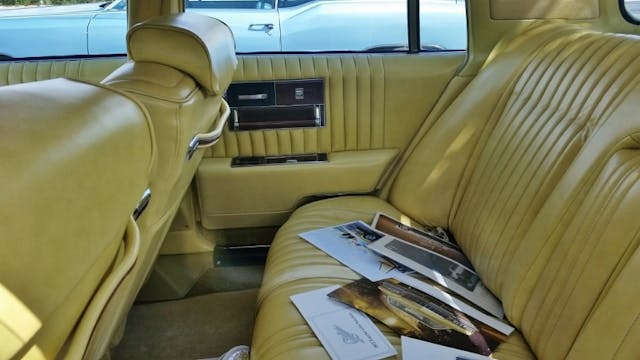
It was thought (correctly, as it turned out) that a smaller version would be popular with not only women, who were not particularly enamored with parallel-parking a Nimitz-Class Fleetwood Brougham or Sedan de Ville, but also as a way of offering a more Mercedes-like Cadillac. A win-win situation.

Thus, the Seville came onto the scene in 1975 as an early ’76 model. It proved popular, and Cadillac made money on every one, as it was priced at the top of the range–including the venerable Fleetwood Brougham. Only the Series Seventy-Fives were pricier. I have to tell you, I think it was a beautiful car. Always have and always will. It was readily identifiable as a Cadillac, yet had a hint of Mercedes-Benz and Rolls Silver Shadow as well.

And it sold well. Remarkably well, despite (or perhaps because of) its price. These cars were well made, comfortable, and solid. It had rather advanced engineering for a Cadillac too, with Bendix fuel injection—a feature which, sadly, was sometimes troublesome. But despite some of the possible issues, these were every inch a Cadillac, despite the X-body starting point. They took the X, and went far, far beyond to make a true Cadillac. Don’t let anyone tell you any different.

Were they fast? Well, not exactly. You want fast, get a Ferrari BB512. Were they heavy? You bet! A plush ride and absolute silence when underway were much more crucial to Cadillac customers, despite what some of the glossy car magazines suggested. If they had utilized less sound insulation, today you’d be hearing about how noisy and rattly they were, not how their 0–60 mph times were less than exciting. We could talk all day about how most post-1974 U.S. cars were slugs—at least when compared to their ’60s forebears.

A ’76 Seville would hit 60 in about 13 seconds—not great, but consider all the then-primitive emissions devices on the things, not to mention the 4179-pound shipping weight. It was still about 800 pounds lighter than a ’78 Eldo, and 140 lighter than a downsized ’78 Fleetwood Brougham.

The 1976–79 Seville also ushered in Bill Mitchell’s “sheer look,” with cliff-face nose, tail, and roofline. This styling would take the GM lineup by storm, being added to our beloved B-body and C-body GMs in 1977. It would soon become a bit of a cliché, appearing on the mini-Seville 1980-up A/G-body sedans as well, but that was later. In ’76, it was fresh, new, and attractive.

So, the Seville was a success. Its new, tidier dimensions and sheer-faced style previewed what was to come on future Cadillacs. It sold well, it was well made, and it started a nameplate that lasted all the way to 2004. Or 2011, if you count the succeeding 2005+ STS, since said acronym originally was short for Seville Touring Sedan.

Was it perfect? No. But it was the 1970s. New federal regulations were coming one wave after the other. Safety, emissions, the whole nine yards. And it showed in everything, from shoddily assembled LTDs to rust-prone Honda Civics to cracker-box Datsun 510 Honeybees.
The Bendix fuel injection system on the Seville’s Oldsmobile 350-cubic-inch V-8 was problematic. Despite being touted as “international sized,” it still had a bench seat and column-shifted Turbo Hydra-Matic.

Now, many Cadillac owners, and even Seville buyers, probably liked the bench seat and column shifter, but it still would have been nice to have an optional bucket-seat-and-console-shift option. Not that it hurt sales any.
Perhaps handling to match contemporary Mercedes-Benz S-Classes and the big BMW sedans could have been a boon. But again, most folks plunking down serious cash on a new Seville just wanted a contemporary, classy, smaller Cadillac. And in that the Seville delivered.
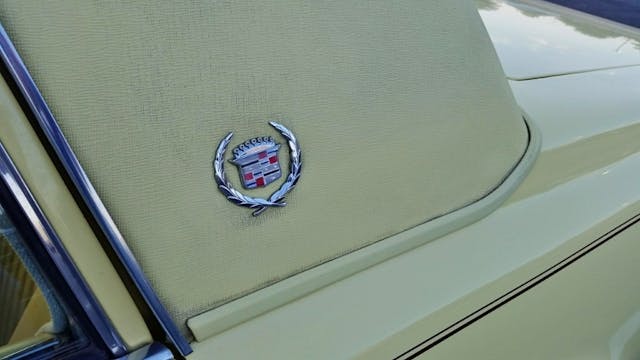
Today’s featured example, a 1977 Seville, is finished in heavenly Naples Yellow with matching yellow Sierra grain leather and padded vinyl roof.

It was duly spotted by my friend Jayson Coombes at the Cadillac-LaSalle club Grand National meet, held in San Marcos, Texas. There were a number of very gorgeous Cadillacs on display, including the ’53 Fleetwood Sixty Special I wrote about in 2020 and a ’58 Eldorado Biarritz that I wrote about last month.
And there are many more I intend to share with all you fine folks.

Jayson knows very well that I am infatuated with the 1976–79 Seville. And that I also love yellow Cadillacs. So you can imagine my reaction when he posted a couple of pictures of this fine automobile on my Facebook page a couple of years back. I believe the term, “Klockau bait” was bandied about.
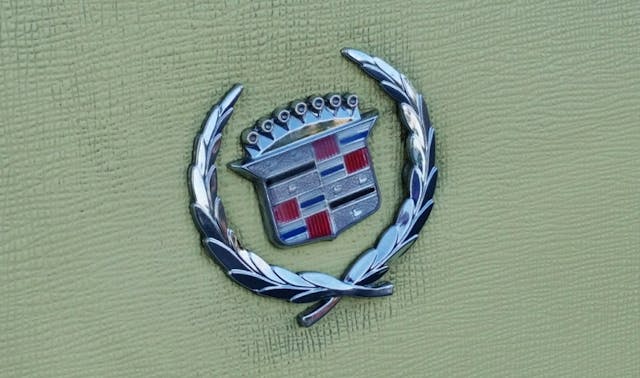
When I saw this sensational Seville, I was simply smitten. Triple yellow (paint, top, and leather interior), factory wire wheels, and an Astroroof?! I immediately messaged him and kind of ordered him to please, please, please take more pictures. And the man delivered! God bless him. The owner is clearly a gentleman of taste—and also extraordinarily lucky.
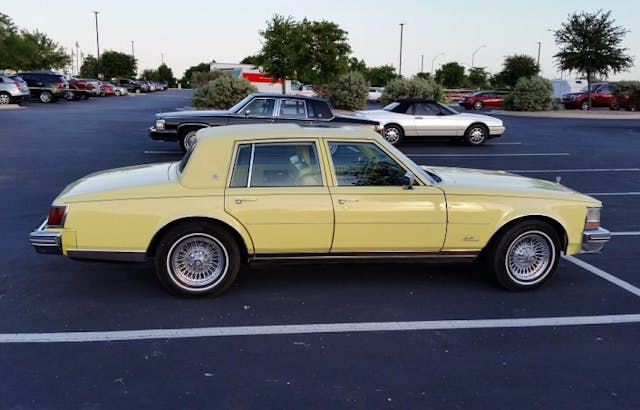
Simply put, the original Cadillac Seville was the right car at the right time, and GM had a hit. A profitable hit. Now, was the Hooper-inspired 1980 second-generation version a hit? Perhaps not. It may have been a little baroque for those 1976–79 Seville owners, though I love those cars too. At any rate, it’s all water under the bridge now. But make no mistake: The original “small Cadillac” was a resounding success. I want one.
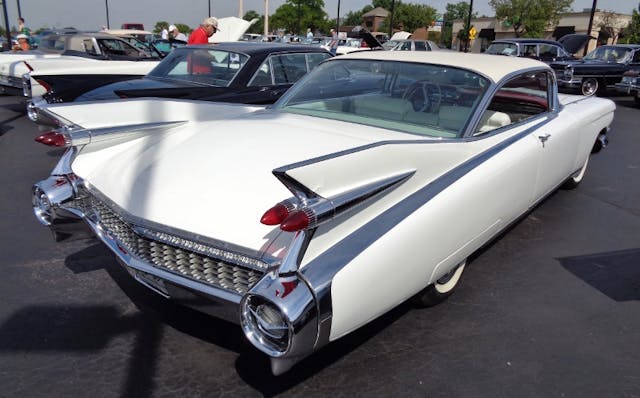































These are Cadillac days of the table of balance and sharper models you have seen on the streets of beautiful 🌹 models 💯% percent & perfection…..
Want to of the car,s please.
Right away cash. I
I have a 1977 Cadillac Seville you can buy. Reach out if you are interested in owning.
Yes a Cadillac Seville is my dream car and next month I’m expecting some funds so if you want to send me some pictures and a price that would be much appreciated
do you have pics